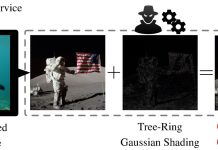
MIT researchers have developed a powerful tool called Metior that can help engineers and scientists assess the effectiveness of obfuscation schemes in computer security.
These schemes aim to limit an attacker’s ability to extract secret information, such as passwords, by studying the behavior of a computer program.
Instead of trying to completely block these “side-channel attacks,” which can be computationally expensive, obfuscation schemes introduce randomization and confuse attackers. Metior allows for a quantitative evaluation of how much sensitive information can still be leaked with different schemes.
Obfuscation schemes work by adding random elements to a victim program’s behavior, making it harder for attackers to discern secrets. Some schemes involve accessing additional areas of the computer’s memory, while others adjust the frequency of memory access.
Although these measures make it more challenging for attackers to succeed, some information can still leak out. The MIT researchers wanted to understand the extent of this leakage.
To accomplish this, the researchers created Metior, a framework that maps the flow of information in an obfuscation scheme into mathematical representations.
By applying techniques from information theory, Metior analyzes how much information an attacker can learn from the victim program and calculates the likelihood of successfully guessing the victim’s secret information.
This enables researchers to explore different strategies and identify small tweaks that can enhance defense against information leaks.
The researchers conducted three case studies using Metior to compare attack strategies and assess the information leakage from state-of-the-art obfuscation schemes. Surprisingly, they discovered that a sophisticated side-channel attack, previously thought to be highly successful, performed no better than a simple, generic attack.
They also uncovered previously unknown victim behaviors exploited by the attack.
Moving forward, the researchers plan to enhance Metior to efficiently analyze even more complex obfuscation schemes.
They aim to study different types of victim programs and obfuscation schemes while conducting detailed analyses of popular defense methods. The ultimate goal is to inspire the development of microarchitectural security evaluation methodologies that can be applied early in the chip design process.
By using Metior, companies can evaluate the value of security features before committing to microprocessor development, which is costly and resource-intensive. This innovative framework empowers engineers to make informed decisions and improve cybersecurity in a comprehensive and cost-effective manner.
In conclusion, Metior shines a light on the effectiveness of obfuscation schemes in safeguarding sensitive information.
By quantifying information leakage and analyzing attack strategies, this groundbreaking tool equips engineers and scientists with the knowledge needed to enhance computer security and protect against cyber threats.
Source: MIT.



